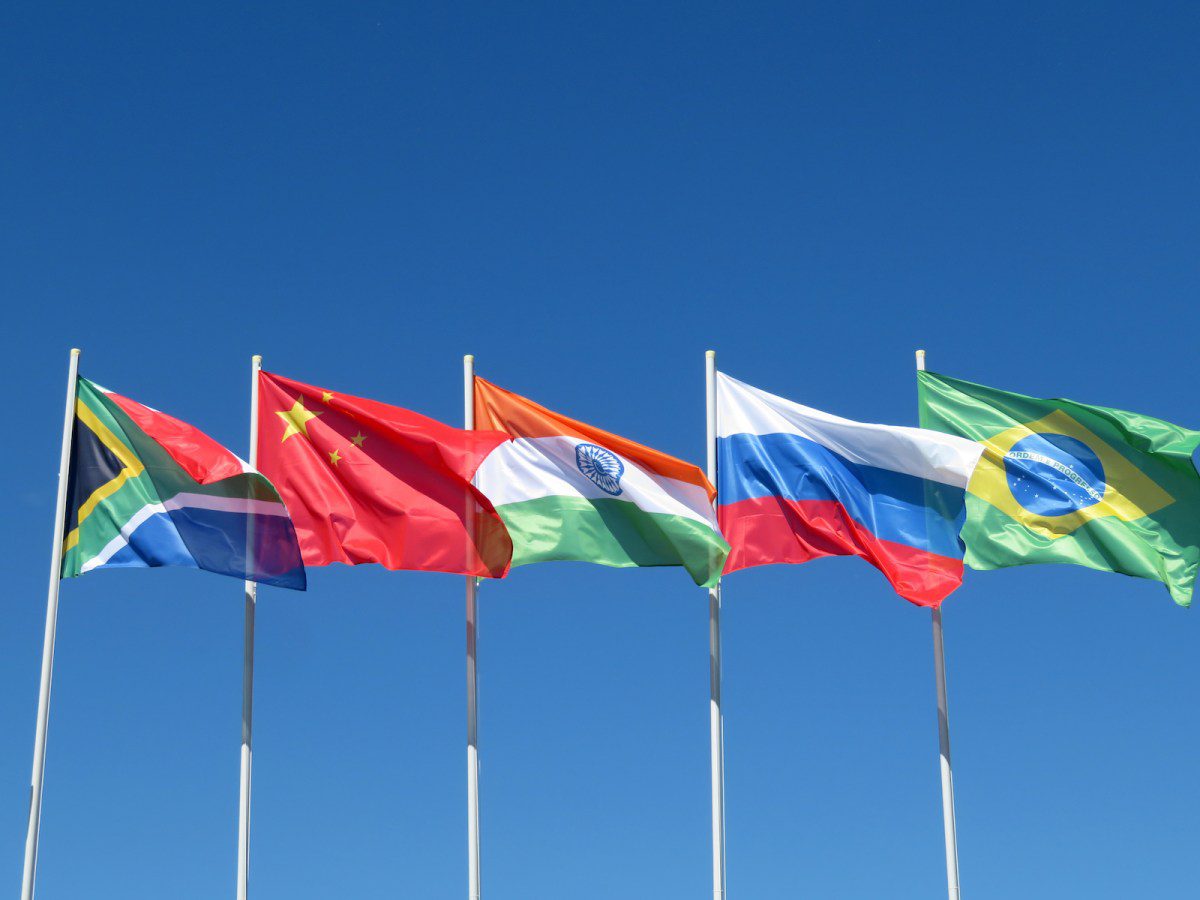Global Courant 2023-04-16 09:11:01
The emerging new always frightens and inspires the fading old. History is proof of that unity of opposites. Sharp rejections of what is new collide with enthusiastic celebrations of it.
The old is pushed away, even as bitter denials of that reality mount. The emerging new global economy presents just such contradictions.
They can illustrate four major developments and underline their interactions.
Shift to economic nationalism
First, the neoliberal globalizing paradigm is now the old one. Economic nationalism is the new.
It is another reversal of their previous positions. Driven by its celebrated profit motive, capitalism in its old centers (Western Europe, North America and Japan) increasingly invested elsewhere: where labor power was much cheaper; markets grew faster; ecological constraints were weak or absent; and governments better facilitated rapid accumulation of capital.
Those investments returned large profits to the old centers of capitalism, whose stock markets boomed and thus widened their income and wealth inequality (since the richest own most of the securities).
Even faster was the economic growth that erupted after the 1960s in what soon became the new centers of capitalism (China, India and Brazil). This growth was reinforced by the arrival of the capital, which was moved from the old centers.
The dynamism of capitalism had previously moved the center of production from England to the European continent and then to North America and Japan. That same profit-driven dynamic took it to mainland Asia and beyond in the late 20th and early 21st centuries.
Neoliberal globalization in theory and practice reflected and justified this displacement of capitalism. It celebrated the profits and growth of both private and state-owned/operated companies around the world.
It downplayed or ignored the other sides of globalization: (1) growing income and wealth inequality in most countries; (2) the shift of production from old to new capitalist centers; and (3) faster growth of production and markets in new centers than in old centers.
These changes shook the societies of the old centers. The middle class there shrank and shrunk as good jobs increasingly moved to the new centers of capitalism.
The employer classes of the old centers used their power and wealth to maintain their social position. In fact, they got richer by getting the bigger profits from the new centers.
However, neoliberal globalization proved disastrous for most workers in the old centers of capitalism. In the latter class, the employer class not only seized rising profits, but also passed on to the workers the cost of the decline of the old centers of capitalism.
Tax cuts on business and the wealthy, stagnant or declining real wages (fueled by immigration), cuts in public services, and infrastructure neglect led to rising inequality.
The working classes in the capitalist West were shocked by the delusion that neoliberal globalization was also the best policy for them. Increasing labor struggles in the US, such as mass uprisings in France and Greece and left-wing political shifts in the South, are leading to rejections of neoliberal globalization and its political and ideological leaders.
Apart from that, capitalism itself is shaken, questioned and challenged. In new ways, projects to transcend capitalism are back on the historic agenda, despite the status quo’s attempts to argue otherwise.
Expansion of state power
Second, the growing problems of neoliberal globalization have forced capitalism to adapt in recent decades. As neoliberal globalization lost mass support in the old centers of capitalism, governments took power and increased economic interventions to maintain the capitalist system.
In short, economic nationalism emerged to replace neoliberalism. Instead of the old laissez-faire ideology and politics, nationalist capitalism rationalized the growing power of the state.
In the new centers of capitalism, greater state power led to economic development that clearly outgrew the old centres. The recipe of the new centers was to create a system in which a large sector of private enterprises (owned and operated by private individuals) merged with a large sector of state-owned enterprises operated by the state and its officials.
Instead of a largely private capitalist system (like the US or UK) or a largely state capitalist system (like the USSR), places like China and India produced hybrids. Strong national governments presided over the coexistence of major private and state sectors to maximize economic growth.
Both private and state-owned companies and their coexistence deserve the label ‘capitalist’. Both are organized around the relationship between employers and employees. In both private and state enterprises/systems, a small employer minority dominates and controls a large employee majority.
After all, slavery also often showed coexisting private and state-owned businesses that shared the defining master-slave relationship. Similarly, feudalism had private and state enterprises with the same lord-serf relationship.
Capitalism does not disappear if it shows coexistence of private and state companies organized around the same employer-employee relationship. So we do not confuse state capitalism with socialism.
In the latter case, a different, non-capitalist economic system replaces the employer-employee organization of workplaces in favor of democratic community organization in the workplace, such as in workers’ co-operatives. The transition to socialism in this sense is also a possible consequence of the current turmoil surrounding the formation of a new global economy.
China’s state-private hybrid is achieving remarkably high and sustainable GDP and real wage growth rates that have continued over the past 30 years. That success deeply influences economic nationalism everywhere to move towards that hybrid as a model.
Even in the US, competition with China is becoming the preeminent excuse for massive government intervention. Tariff wars – which raised domestic taxes – could be enthusiastically endorsed by politicians who otherwise preached a laissez-faire ideology.
The same was true of government-led trade wars, targeting specific companies for punishments or bans, government subsidies to entire industries, and so many anti-China economic ploys.
Imperial downfall
Third, the American empire peaked in recent decades and began to decline. It thus follows the classical pattern of birth, evolution, decline and death of every other empire (Greek, Roman, Persian and British).
The American Empire evolved from and replaced the British Empire over the past century and especially after World War II. Earlier, in 1776 and again in 1812, the British Empire tried but failed militarily to prevent or halt the development of independent American capitalism.
After those failures, Britain took a different path in its relations with the US. After many more wars in its colonies and with competing colonialisms in the 19th and 20th centuries, the British Empire is now gone.
The question is whether the US has learned or can even learn the most important lesson from Britain’s imperial decline. Or will it continue to use military means, increasingly desperate and dangerous, to hold on to a global hegemonic position that is relentlessly diminishing?
After all, the US wars in Korea, Vietnam, Afghanistan and Iraq were all lost. China has now replaced the US as the main peacemaker in the Middle East. The days of the US dollar as the top global currency are numbered. America’s supremacy in high-tech industries must already be shared with China’s high-tech industries.
Even major US corporate CEOs like Apple’s Tim Cook and the American Chamber of Commerce want the benefits of increased trade and investment flows between the US and China. They watch with dismay the increasing politically driven hostilities of the Joe Biden administration against China.
What does the future bring?
Fourth, the decline of the American empire raises the question of what comes next as the decline deepens.
Is China the emerging new hegemony? Will it inherit the US empire mantle as the US took it from Britain? Or will a multinational new world order emerge that will shape a new global economy?
The most interesting possibility, and perhaps the most likely, is that China and the entire BRICS group (Brazil, Russia, India, China and South Africa) will take on the building and maintenance of a new global economy.
The war in Ukraine has already increased the prospects of such an outcome by strengthening the BRICS alliance. Many other countries have applied or will soon apply to join the BRICS framework.
Together they have the population, resources, productive capacity, connections and built solidarity to form a new pole for global economic development. Playing that role would force the remaining parts of the world, from Australia and New Zealand to Africa, Europe and South America, to rethink their foreign economic and political policies.
Their economic future depends in part on how they navigate the battle between old and new world economic organizations. That future also depends on how critics and victims of both neoliberal/globalizing capitalism and nationalist capitalism interact within all nations.
This article was produced by Economy for everyonea project by the Independent Media Institute, which it provided to Global Courant.
Similar:
Loading…








